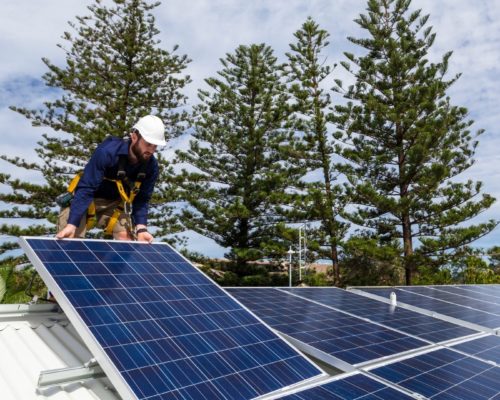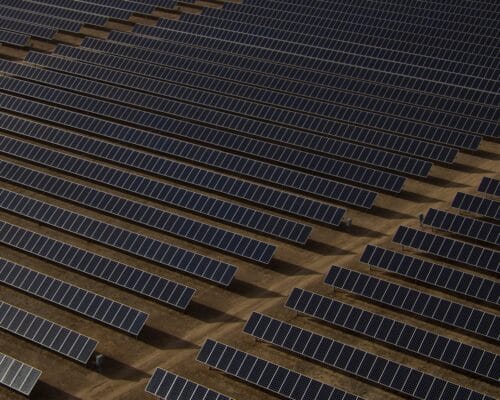APAC Data Centre Carbon Footprint to Escalate from Gas Usage
06 November 2024 – by Tim Daiss
The Asia-Pacific (APAC) region is projected to see the carbon footprint of its data centres escalate in the coming years as more data centres go online. Data centre capacity in the region is expected to more than double by 2028 as several APAC countries increase efforts to attract foreign direct investment into the sector. Moody Ratings has forecast that APAC data centre capacity will grow at a compound annual average rate (CAGR) of nearly 20% through 2028.
Data Centre Investment Ramp-up
Data centre investment in the APAC region is increasing, but the real data centre growth story comes from Southeast Asia. In 2023, the data centre market in Southeast Asia attracted USD 10.23 billion in investments. That amount is forecast to reach USD 17.73 billion by 2029, for a CAGR of 9.59%. Association of Southeast Asian Nations (ASEAN) members Singapore, Malaysia, Thailand and Indonesia are leading this transformation, positioning Southeast Asia as a global digital hub.
This investment benefits APAC economies and can help so-called developing nations in the region improve their respective economic status, wages, tax base, health care and standard of living. So far, so good.
Do Data Centres Pollute the Environment?
However, there are considerable drawbacks, including water intensity in a part of the world that already has water challenges. This is due to the region’s geography, climate, population growth and economic development. By 2030, the region is projected to experience a 40% water shortfall. Moreover, along with water consumption, harmful environmental impacts from data centre carbon footprint include electronic and toxic waste, land use and greenhouse gas emissions.
These hyper-scale data centres also consume large amounts of energy, with power demands of 100 megawatts (MW) or even more. Annual electricity consumption is equivalent to the electricity demand of between 350,000 and 400,000 electric vehicles.
Gas, Not Renewable Energy, Will Power Data Centre Development
Worse yet, power demand will not be met by solar or wind power but by liquefied natural gas (LNG) and gas-to-power projects. A new Wood Mackenzie report projects that gas demand from additional data centre investment in the region will increase LNG usage so much that data centres could account for between 2 million and 7 million tonnes per annum of total gas demand by 2030 across Japan, South Korea, Singapore and Thailand.
That’s between 2% and 5% of total global LNG imports by 2030. Since natural gas emits at least 50% of the carbon dioxide emissions as does coal, the world’s dirtiest burning fossil fuel, when used in power generation, more gas-powered data centres are not in the region’s best interest.
AZEC Established to Help Decarbonise
However, the recently formed Japanese-led Asia Zero Emissions Community (AZEC) could help the data centre industry shift from gas reliance to clean energy sources. After all, it was formed last year to advance climate cooperation in Asia.
Its stated goal is to decarbonise not only Asia but the entire world. It invests public Japanese funds from climate transition bonds to create a new Asian decarbonisation market. AZEC members, including Japan and Australia and ASEAN members Brunei, Cambodia, Indonesia, Laos, Malaysia, the Philippines, Singapore, Thailand and Vietnam, can apply for these funds.
AZEC’s Track Record Falls Short
However, AZEC is not only not addressing data centre emissions but also failing to look for alternative ways to generate electricity. It’s already approved false climate change technologies for member countries. These include ammonia co-firing, additional LNG development and usage and carbon capture and storage development. Markedly, 35% of the 158 agreements signed between Japan and partner AZEC countries, 56 projects, are linked to these technologies.
Most Recent Meeting
There was a chance to change course at the second annual AZEC leaders’ meeting held in Vientiane, Laos, on Oct. 11. However, leaders highlighted natural gas and LNG’s essential role as transition fuels to achieve climate goals. The meeting ended with a comprehensive agreement on a list of actions to take, but no mention of how to power data centres or mitigate corresponding emissions. As such, any future dialogue on how to best power data centre growth could be met by more gas and LNG development.
How To Reduce Data Centre Carbon Footprint
Renewable energy is better than LNG for generating electricity for data centres. This point is even more acute given that renewable energy projects largely reached cost parity with fossil fuel projects several years ago and are now mostly less expensive. As such, the argument for more LNG and gas-to-power utilisation falls apart.
Corporate Interests
Yet, ultimately, corporate interests might be the main stumbling block. This includes Japanese utilities, oil and gas companies and domestic banks that fund these capital-intensive projects. Notably, the Japanese government and its megabanks are the largest funders of Southeast Asia’s gas expansion.
Moreover, given that Japan is the world’s second-largest LNG importer, a major re-seller of the fuel for both term agreements and spot market deals and a major gas and LNG development financier, it would take strong political determination to pivot away from gas. To date, however, that determination is still lacking.
by Tim Daiss
Tim has been working in energy markets in the Asia-Pacific region for more than ten years. He was trained as an LNG and oil markets analyst and writer then switched to working in sustainable energy, including solar and wind power project financing and due diligence. He’s performed regulatory, geopolitical and market due diligence for energy projects in Vietnam, Thailand and Indonesia. He’s also worked as a consultant/advisor for US, UK and Singapore-based energy consultancies including Wood Mackenzie, Enerdata, S&P Global, KBR, Critical Resource, and others. He is the Chief Marketing Officer (CMO) for US-based lithium-sulfur EV battery start-up Bemp Research Corp.
Read more







